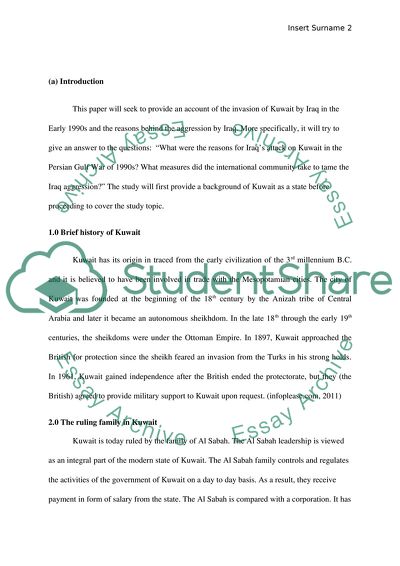Cite this document
(“Iraq Invasion of Kuwait: Gulf War 1990-1991 Essay”, n.d.)
Retrieved from https://studentshare.org/history/1584678-iraq-invasion-of-kuwait-gulf-war-1990-1991
Retrieved from https://studentshare.org/history/1584678-iraq-invasion-of-kuwait-gulf-war-1990-1991
(Iraq Invasion of Kuwait: Gulf War 1990-1991 Essay)
https://studentshare.org/history/1584678-iraq-invasion-of-kuwait-gulf-war-1990-1991.
https://studentshare.org/history/1584678-iraq-invasion-of-kuwait-gulf-war-1990-1991.
“Iraq Invasion of Kuwait: Gulf War 1990-1991 Essay”, n.d. https://studentshare.org/history/1584678-iraq-invasion-of-kuwait-gulf-war-1990-1991.


